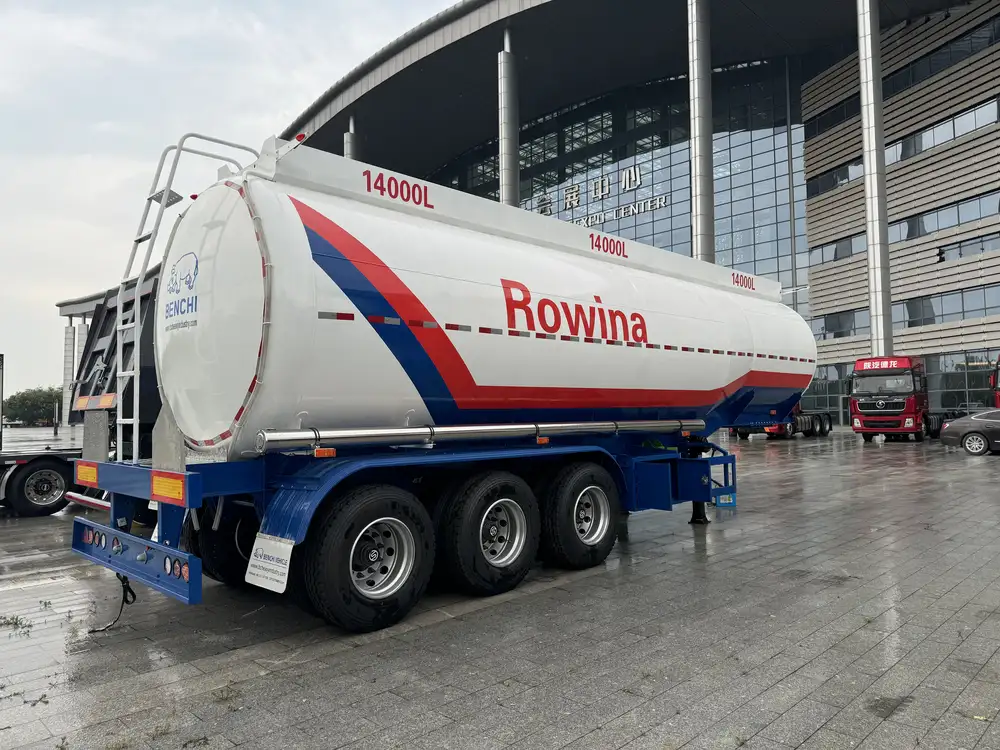In the realm of logistics and transportation, the operation of tanker trailers, particularly those equipped with steam lines and coils, presents a unique set of challenges and requirements. Understanding these intricacies can not only streamline operations but also enhance safety and efficiency. This guide delves deep into the operational aspects of tanker trailer steam lines and coils, providing insights and strategies for optimal management.
Understanding Tanker Trailers: Anatomy and Function
Structural Components
Tanker trailers are designed with particular functionalities in mind. The primary components include:
- Tank Body: The cylindrical container that holds the liquid cargo.
- Steam Heating System: A series of coils integrated within the tank that circulate steam to maintain temperature.
- Insulation: Protects the cargo from temperature fluctuations.
- Pipes and Valves: For loading and unloading, as well as controlling steam flow.

Operation Mechanisms
The operation of a tanker trailer with steam lines involves understanding how these systems interplay:
- Steam Generation: Typically occurs at the source, in a boiler system or an external steam supply.
- Distribution: Steam is distributed through pipes to the coils wrapped around the tank’s interior.
- Temperature Control: Ensures that the correct temperature is maintained throughout transportation.
How Steam Lines and Coils Work: A Closer Look
The Role of Coils in Tanker Trailers
Coils inside tanker trailers serve a pivotal role in heating bulk liquids. These coils are usually made of steel or other heat-conductive materials. Their primary functions include:
- Maintaining Viscosity: Many cargoes require specific temperature ranges for proper fluidity.
- Preventing Build-up: In the case of viscous materials, heating helps to prevent crystallization or solidification during transit.

Operation of Steam Lines
The steam lines are the pathways that transport steam to the coils. The operational process can be broken down into several key steps:
- Connecting to a Steam Source: Ensure a stable and compatible steam supply.
- Monitoring Pressure and Temperature: Utilize pressure gauges and thermometers to ensure steam is appropriately heated and circulated.
- Safety Protocols: Follow prescribed safety measures to prevent leaks or overheating, which could lead to accidents.
Common Challenges and Solutions
Blockages and Restrictions
During operation, blockages can occur within the steam lines or coils, leading to inefficiencies or failures.
Solutions:
- Implement regular inspections and maintenance schedules.
- Install filters or strainers at critical points to minimize debris entry.

Temperature Control Issues
Maintaining the appropriate temperature within the tanker trailer is crucial for safe and efficient operations.
Solutions:
- Use advanced monitoring systems with alarms to alert operators of temperature deviations.
- Upgrade to insulated steam lines to minimize heat loss.
Safe Operations: Best Practices
Ensuring safety while operating tanker trailers with steam lines and coils is paramount. Here are essential best practices:
Pre-Operational Checks
- Inspection of Equipment: Before loading, inspect the tanker for leaks or damages.
- Verification of Steam Line Connections: Ensure tight and secure connections to prevent steam loss.

During Operation
- Constant Monitoring: Operators should regularly check temperature and pressure gauges.
- Emergency Preparedness: Have a response plan in place in case of steam leaks or pressure failures.
Post-Operational Procedures
- Cool Down Process: Gradually lower the temperature of the coils before unloading to prevent thermal shock.
- Cleaning Protocols: After unloading, clean the steam lines to prevent residue buildup from previous contents.
Advantages of Using Steam Lines in Tankers

Enhanced Efficiency
The incorporation of steam lines results in quicker loading and unloading processes, as well as improved temperature control during transport.
Product Quality Assurance
Maintained temperatures ensure that the integrity of the transported materials is not compromised, thus preserving quality.
Reduced Heft of Maintenance
Regular maintenance of steam lines and coils reduces the likelihood of costly repairs, extending the lifespan of the tanker trailer systems.

Comparative Analysis: Steam Lines vs. Other Heating Methods
When evaluating the effectiveness of steam lines in tanker trailers, considering alternatives can provide a clearer picture of their advantages.
| Heating Method | Efficiency | Cost | Temperature Control | Maintenance |
|---|---|---|---|---|
| Steam Lines | High | Moderate | Excellent | Low |
| Electric Heaters | Moderate | High | Good | Moderate |
| Hot Water Lines | Moderate | Low | Average | High |
Conclusion
The operational success of tanker trailers equipped with steam lines and coils hinges upon a comprehensive understanding of their functionalities and challenges. By implementing best practices, regularly maintaining equipment, and leveraging advanced monitoring systems, operators can significantly enhance safety and efficiency in their transportation processes.
Future Considerations
As technology advances, integration of IoT devices for monitoring and predictive maintenance may revolutionize the operational landscape of tanker trailers. Embracing such innovations will undoubtedly enhance the reliability and effectiveness of steam line operations, ensuring that manufacturers and operators alike can keep pace with the evolving logistics demands.
For any manufacturer or user of tanker trailers, an investment in training and awareness surrounding steam line operation can yield significant dividends in efficiency, safety, and cost effectiveness. By prioritizing education and rigorous maintenance protocols, the complexities of tanker trailer operations can be mastered, setting the stage for a successful transport experience.



